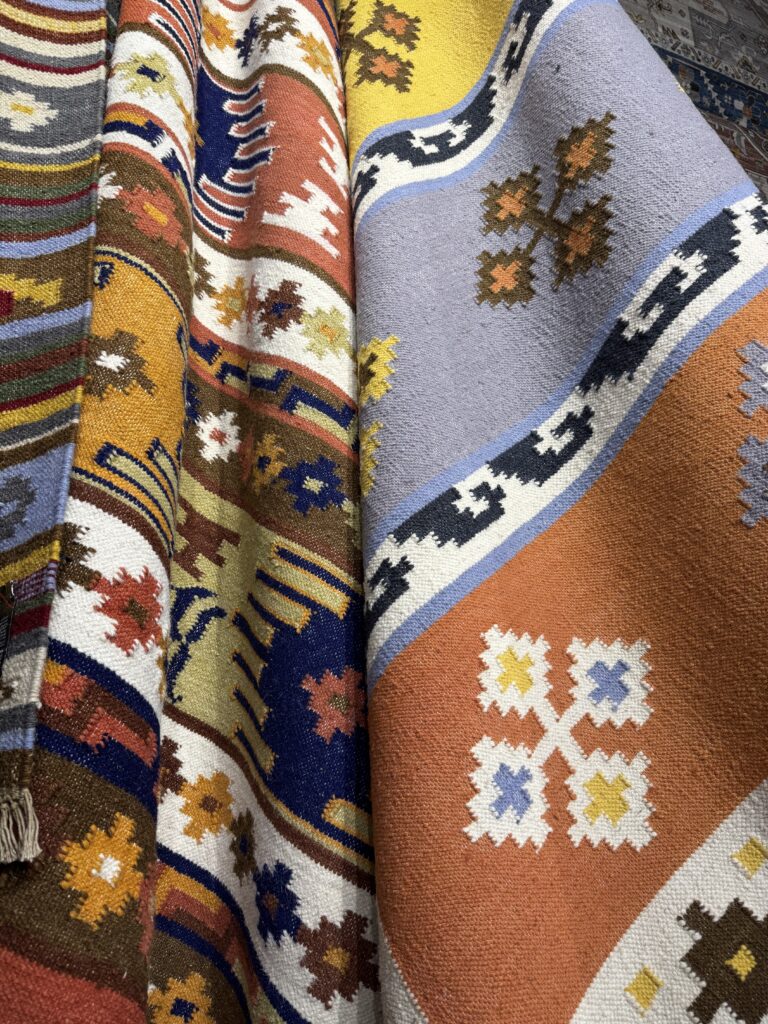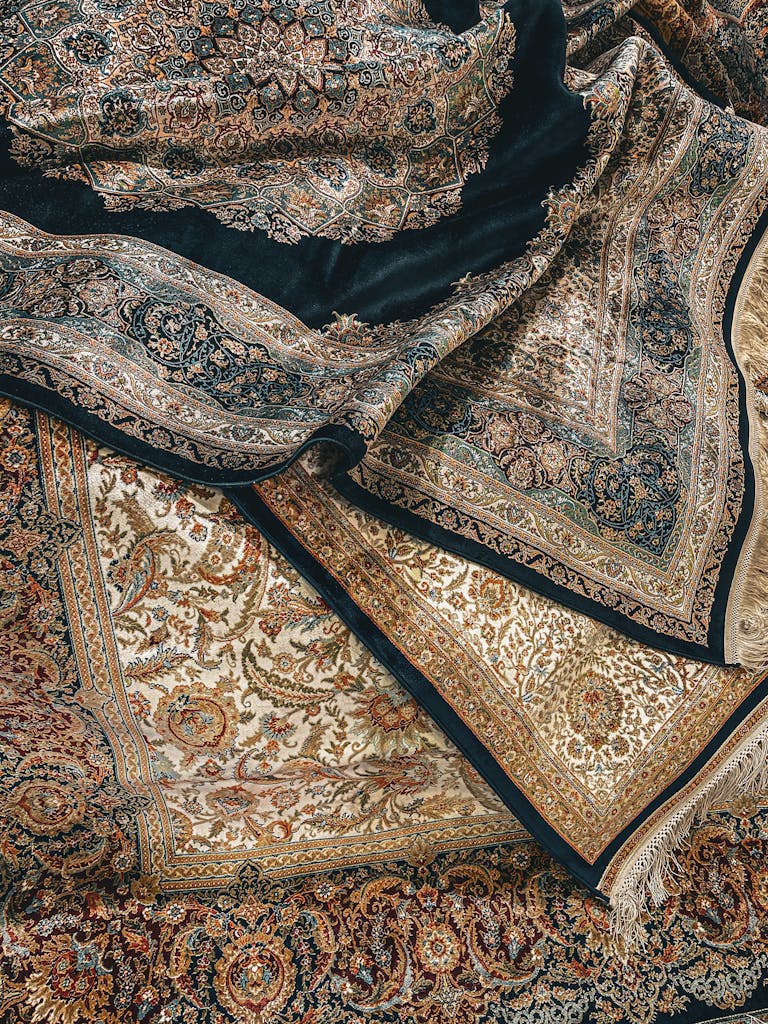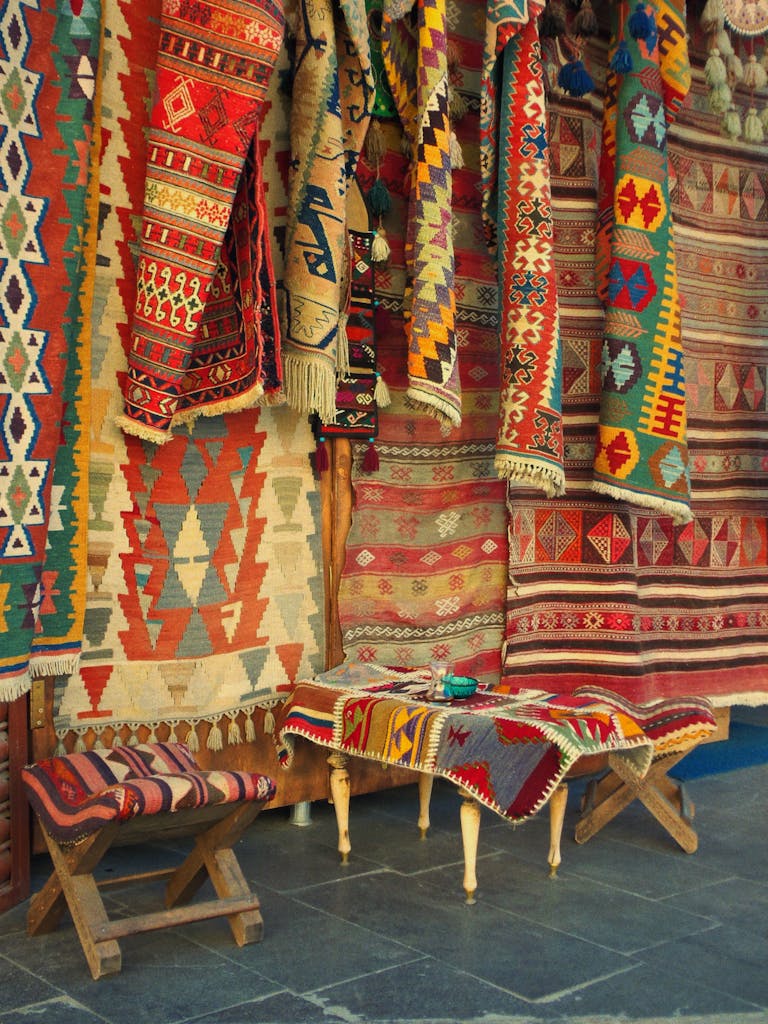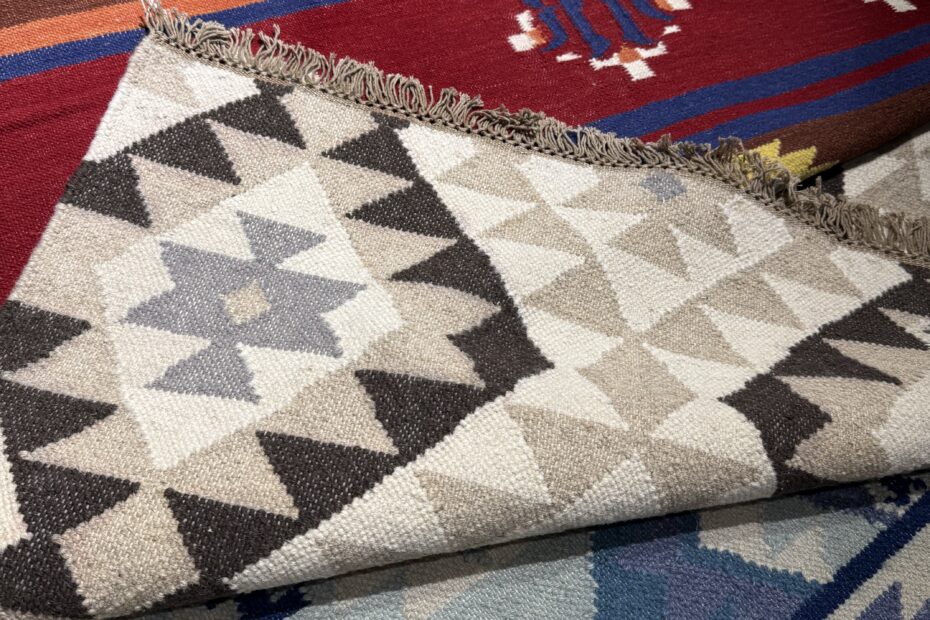One day, I walked into a luxurious rug store, searching for a piece that would add warmth and elegance to a residential project I was working on. As I admired the designs and colors, a finely detailed motif on one of the carpets caught my eye — it seemed to tell an ancient Persian story. I asked the salesperson, “Do you know the type of this motif? Is it Tabrizi, Kashani, or a Bedouin pattern?” He smiled politely and replied, “It’s natural wool carpet…” That’s when I realized: the entire conversation revolved around the material, with no understanding of the rug’s cultural or technical identity. Thus began my journey to create this comprehensive guide for anyone seeking a carpet designed with intention — not just a piece of fabric for the floor.
1. The Best Carpet Types for Every Interior Space
There is no one-size-fits-all carpet. A rug for a grand reception area differs vastly from one placed under a dining table or at a home entrance. In high-traffic spaces like living rooms, opt for tightly woven, durable carpets such as wool or nylon. For private areas like bedrooms, softer and warmer options like synthetic silk or plush carpeting are better suited. For kitchens and bathrooms, avoid fixed rugs — go for washable, water-resistant carpets.
2. Carpets to Break Color Uniformity and Dampen Visual Echo
Rugs play a subtle yet powerful role in breaking color monotony and creating visual balance. In spaces with neutral or uniform walls, patterned or warm-toned rugs can break the monotony and add depth and personality. In stark white or cool-toned interiors, a rug in earthy tones or Eastern patterns can add vibrancy without disrupting the overall harmony. Quality rugs also reduce acoustic echo, especially in open-plan areas or rooms with high ceilings.
3. How to Carefully Choose a Bedroom Rug
The bedroom is a sanctuary, and its rug is more than just decorative — it’s an extension of comfort. Choose a soft, thick rug that extends at least 60 cm beyond the edges of the bed. Calming colors like light gray, beige, or soft blue enhance a peaceful ambiance. Avoid loud patterns or bold colors in the bedroom, as they create visual distraction and reduce the effect of soft lighting.

4. Cleanliness and the Problem of “Freckling” in Some Rugs
One of the most common complaints among rug owners is “freckling” — scattered spots caused by fiber damage or poor dyeing, particularly in synthetic or cheap rugs. Always inspect a rug under strong natural light before purchasing, checking for color consistency and weave uniformity. Regular care using a soft vacuum and avoiding hot water when cleaning helps maintain the rug’s appearance. Natural materials like wool or silk should ideally be steam-cleaned or handled by professionals.
First: Materials – From Sheep Wool to Nylon Threads
- Natural Wool: The most reputable and durable, often sourced from Iran, New Zealand, or Turkey. Warm, flexible, and naturally stain-resistant.
- Silk: Rare and luxurious, commonly found in handwoven Persian or Chinese rugs. Offers a subtle sheen and is among the most valuable choices.
- Cotton: Often used as a base for handwoven rugs, or for affordable options. Less elastic than wool, but more rigid.
- Polyester and Nylon: Common in modern synthetic rugs. Bright in color, low-cost, and easy to clean, but lacking the soul of handwoven natural rugs.
Second: Technical Types – Handwoven, Semi-Automated, Machine-Made
- Handwoven Rugs: Made knot by knot, often named after their city of origin—e.g., Tabriz, Qom, Kashan, or Bukhara. Each piece is a unique artistic statement.
- Semi-Automated Rugs: Machine-woven base with manually finished decorations.
- Machine-Made Rugs: Mass-produced using electronic machines; ideal for heavy-use spaces due to affordability.
Third: Patterns and Visual Styles
- Persian Medallion Motif: A central round or oval motif surrounded by symmetrical floral decorations.
- Kilim Motifs (Herati or Zolbia): Flat designs based on repeating geometric patterns.
- Bukhara Motifs: Characterized by repeated oval shapes (similar to walnuts) in dark tones.
- Modern Styles: Faded colors, abstract patterns, or contemporary designs inspired by nature or art.

Fourth: Rug Origins – Production Countries and Beauty Centers
- Iran: The beating heart of handwoven rug making, with over 2,500 registered motifs.
- Turkey: Especially the Hereke region, known for exquisite silk rugs.
- India and Pakistan: Renowned for high-volume, quality, and competitively priced production.
- Afghanistan: Tribal designs that are bold, vibrant, and often made from coarse wool.
- Morocco: Atlas Berber rugs — warm colors and spontaneous patterns, now icons of bohemian interiors.
Fifth: How to Choose the Right Rug for Your Space
- For formal reception rooms: Choose handwoven rugs with classical motifs (like Tabriz or Qom) for sophistication and grandeur.
- For everyday areas: Go for synthetic or semi-automated rugs for durability and ease of cleaning.
- For bedrooms: Select soft rugs in soothing colors (gray, ivory, pale pink).
- For hallways: Use narrow, durable runners—preferably in dark shades to hide dirt.
Sixth: Standard Carpet Sizes and Guidelines
| Room Type | Ideal Rug Size | Notes |
|---|---|---|
| Formal Majlis | 3 × 4 m or larger | All furniture should sit entirely on the rug |
| Living Room | Around 2.5 × 3.5 m | Can be under front legs of sofas only |
| Master Bedroom | 2 × 3 m or two side runners | Enhances morning comfort |
| Hallway | 0.8 × 2.5 m or custom | Choose long, sturdy rugs |
| Entrance or Veranda | 1 × 1.5 m | Should be washable and lightweight |
Seventh: Golden Tips Before Buying
- Inspect the rug from the back: For handwoven pieces, look for irregular knots and slightly raised threads.
- Color test: Wipe with a damp white cloth to check for dye fastness.
- Ask about actual country of origin: Don’t rely solely on labels.
- Compare price to material: A “handmade silk rug” at a cheap price? That’s a red flag.
- Ensure certificate of origin or quality guarantee when buying from reputable stores.

Conclusion: A Rug Is Not Just a Floor Piece
A rug is a visual memory, the soul of a space, and a reflection of your architectural taste. Between wool and silk, Tabriz and Morocco, handwoven and machine-made, the real decision lies in your awareness. Don’t let the material distract you from the meaning, or the color blind you to the function. Choose what suits you—your space—and your lived experience.
